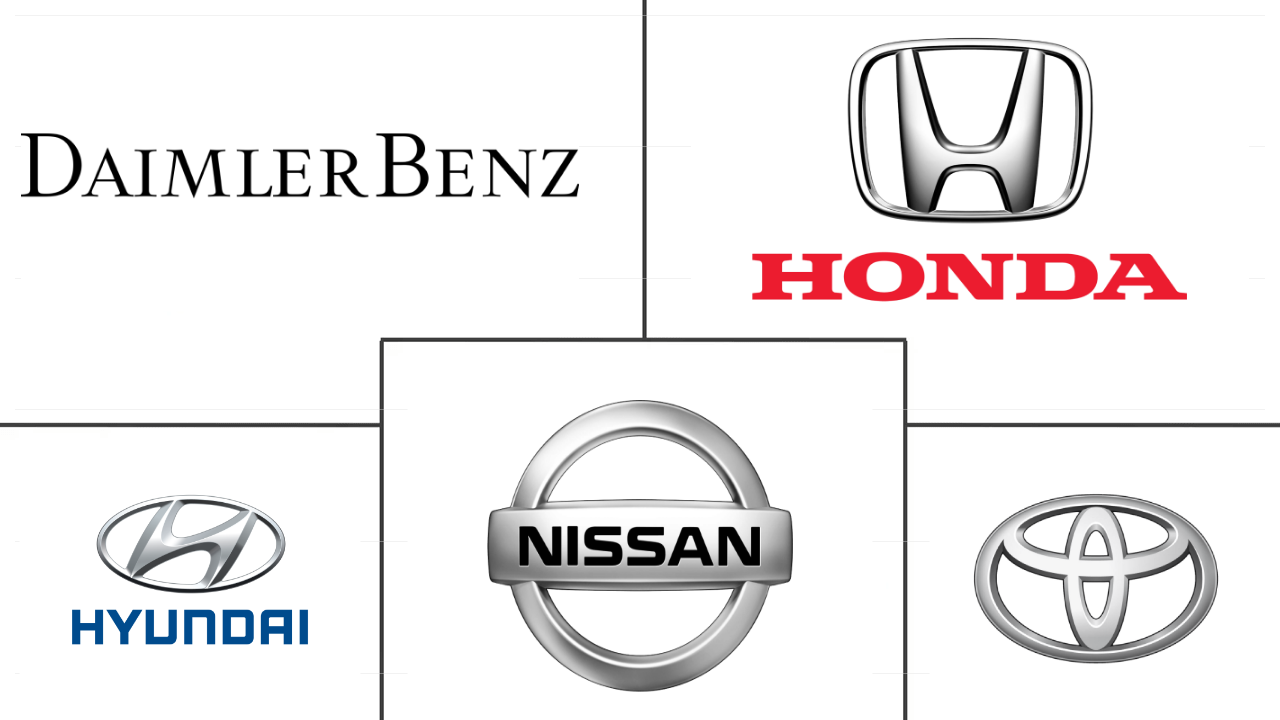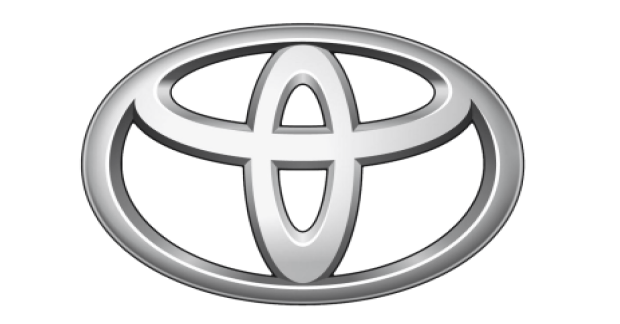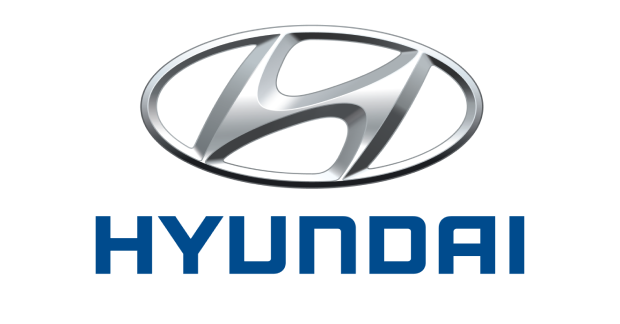Market Size of asia-pacific fuel cell vehicles Industry
| Icons | Lable | Value |
|---|---|---|
|
|
Study Period | 2017 - 2030 |
|
|
Market Size (2024) | USD 1.65 Billion |
|
|
Market Size (2030) | USD 10.69 Billion |
|
|
CAGR (2024 - 2030) | 36.56 % |
|
|
Largest Share by Country | China |
|
|
Market Concentration | Medium |
Major Players |
||

|
||
|
*Disclaimer: Major Players sorted in no particular order |
Asia-Pacific Fuel Cell Vehicles Market Analysis
The Asia-Pacific Fuel Cell Vehicles Market size is estimated at 1.65 billion USD in 2024, and is expected to reach 10.69 billion USD by 2030, growing at a CAGR of 36.56% during the forecast period (2024-2030).
1.65 Billion
Market Size in 2024 (USD)
10.69 Billion
Market Size in 2030 (USD)
46.54 %
CAGR (2017-2023)
36.56 %
CAGR (2024-2030)
Largest Segment by Country
72.52 %
value share, China, 2023
China leads in fuel cell vehicles due to government investment in hydrogen technology, large-scale infrastructure projects, and a strong focus on reducing emissions and adopting clean energy.
Fastest-growing Segment by Country
85.36 %
Projected CAGR, India, 2024-2030
India is the fastest-growing segment due to increasing government support for hydrogen fuel technology, investment in infrastructure, and the growing need for sustainable transportation solutions.
Fastest-growing Segment by Vehicle Body Type
74.21 %
value share, Buses, 2023
Buses are the fastest-growing segment due to advancements in hydrogen fuel cell technology, increased demand for zero-emission transportation, and supportive policies for sustainable transport.
Leading Market Player
32 %
market share, Toyota Motor Corporation, 2023

Toyota Motor Corporation dominates the market with its pioneering fuel cell technology, extensive R&D investments, and leadership in developing hydrogen infrastructure across the Asia-Pacific region.
Second leading Market Player
28 %
market share, Hyundai Motor Company, 2023

Hyundai Motor Company is a major player due to its advanced fuel cell vehicle models, strong commitment to hydrogen technology, and strategic initiatives promoting fuel cell adoption in Asia.
Demonstrates the region's advanced approach to implementing fuel cell technology in various vehicle types, indicating strong potential for hydrogen as a clean energy source in transportation
- The Asia-Pacific region is witnessing a surge in sustainable transportation, evident in its robust growth across diverse segments. From passenger cars to commercial vehicles, spanning light commercial pick-up trucks, vans, medium to heavy-duty trucks, and buses, the region is steadfastly embracing green mobility. Notably, the rising sales of fuel cell electric vehicles (FCEVs) in the passenger car segment highlight the region's leadership in adopting clean transportation. These sales saw a significant increase from 2017 to 2023, and the trend is projected to persist till 2030.
- In the commercial vehicle arena, both light and heavy-duty segments are poised for substantial growth, driven by a strategic emphasis on hydrogen fuel cell technology. Sales of light commercial pick-up trucks and vans have witnessed a remarkable surge, signaling a shift toward zero-emission vehicles tailored for the logistics and transportation sectors. This transition is bolstered by investments in hydrogen infrastructure and government incentives aimed at curbing carbon emissions.
- Medium and heavy-duty commercial trucks, alongside FCEV-powered buses, are also on a rapid growth trajectory, with sales volumes set to soar by 2030. The optimism surrounding FCEVs in the Asia-Pacific region underscores a significant move toward a hydrogen-based economy, setting a global precedent for clean energy adoption. Government initiatives, technological advancements, and the declining cost of green hydrogen production are pivotal factors in this transition, rendering FCEVs increasingly attractive for both commercial and passenger transportation.
The Asia-Pacific fuel cell vehicles market is gaining momentum, with specific countries leading the charge toward hydrogen fuel technology adoption
- These initiatives taken by governments across the world to adopt green energy mobility in order to curtail and curb transportation pollution are among the key factors that are projected to drive the fuel cell commercial vehicle market in the near future. In November 2019, the government-backed Chinese business, Beiqi Foton Motor, a truck and bus manufacturer, announced that it would invest USD 2.6 billion in alternative energy vehicles, including fuel cell engines. The company plans to deploy 200,000 new energy commercial vehicles by 2025.
- Several major OEM players are investing heavily in research and development, and they are entering strategic partnerships to enhance their technologies for commercial vehicles. In January 2020, Japan's Honda Motor and Isuzu Motors announced that they would jointly conduct research on the use of hydrogen fuel cells to power heavy-duty trucks, looking forward to expanding fuel-cell usage by applying zero-emission technology to larger vehicles. Such developments are expected to enhance the electric commercial vehicles market across Asia-Pacific.
- In 2020, South Korea extended the purchase subsidy for electric vehicles for passenger cars until 2024, and for buses and trucks, it was extended until 2025. The bonus is tied to a price cap. EVs priced below KRW 60 million are eligible for full subsidies, but vehicles priced between KRW 60 million and 90 million may receive only 50% of the full amount. Previously, up to KRW 8 million in subsidies were available per vehicle.
Asia-Pacific Fuel Cell Vehicles Industry Segmentation
Commercial Vehicles are covered as segments by Vehicle Type. Australia, China, India, Indonesia, Japan, Malaysia, South Korea, Thailand, Rest-of-APAC are covered as segments by Country.
- The Asia-Pacific region is witnessing a surge in sustainable transportation, evident in its robust growth across diverse segments. From passenger cars to commercial vehicles, spanning light commercial pick-up trucks, vans, medium to heavy-duty trucks, and buses, the region is steadfastly embracing green mobility. Notably, the rising sales of fuel cell electric vehicles (FCEVs) in the passenger car segment highlight the region's leadership in adopting clean transportation. These sales saw a significant increase from 2017 to 2023, and the trend is projected to persist till 2030.
- In the commercial vehicle arena, both light and heavy-duty segments are poised for substantial growth, driven by a strategic emphasis on hydrogen fuel cell technology. Sales of light commercial pick-up trucks and vans have witnessed a remarkable surge, signaling a shift toward zero-emission vehicles tailored for the logistics and transportation sectors. This transition is bolstered by investments in hydrogen infrastructure and government incentives aimed at curbing carbon emissions.
- Medium and heavy-duty commercial trucks, alongside FCEV-powered buses, are also on a rapid growth trajectory, with sales volumes set to soar by 2030. The optimism surrounding FCEVs in the Asia-Pacific region underscores a significant move toward a hydrogen-based economy, setting a global precedent for clean energy adoption. Government initiatives, technological advancements, and the declining cost of green hydrogen production are pivotal factors in this transition, rendering FCEVs increasingly attractive for both commercial and passenger transportation.
| Vehicle Type | |||||||
|
| Country | |
| Australia | |
| China | |
| India | |
| Indonesia | |
| Japan | |
| Malaysia | |
| South Korea | |
| Thailand | |
| Rest-of-APAC |
Asia-Pacific Fuel Cell Vehicles Market Size Summary
The Asia-Pacific Fuel Cell Vehicles Market is experiencing significant growth, driven by a strong shift towards sustainable transportation solutions. This transition is evident across various vehicle segments, including passenger cars and commercial vehicles such as light and heavy-duty trucks, vans, and buses. The region is leading in the adoption of fuel cell electric vehicles (FCEVs), with increasing sales reflecting a commitment to green mobility. This growth is supported by strategic investments in hydrogen infrastructure, government incentives, and technological advancements, which are making FCEVs more appealing for both commercial and passenger transportation. The emphasis on hydrogen fuel cell technology is particularly strong in the commercial vehicle sector, where a notable shift towards zero-emission vehicles is underway, aligning with global efforts to reduce carbon emissions.
The market landscape is moderately consolidated, with major players like Daimler AG, Honda Motor Co. Ltd., Hyundai Motor Company, Nissan Motor Co. Ltd., and Toyota Motor Corporation leading the charge. These companies are heavily investing in research and development and forming strategic partnerships to enhance their fuel cell technologies. Government initiatives across the region, such as subsidies and supportive policies, are further propelling the market forward. The Asia-Pacific region is not only setting a precedent for clean energy adoption but also paving the way for a hydrogen-based economy, with significant developments in both passenger and commercial vehicle sectors. As public transportation and electric mobility solutions gain traction, the market is poised for continued expansion, reflecting a broader global trend towards sustainable and eco-friendly transportation options.
Asia-Pacific Fuel Cell Vehicles Market Size - Table of Contents
-
1. MARKET SEGMENTATION (includes market size in Value in USD and Volume, Forecasts up to 2030 and analysis of growth prospects)
-
1.1 Vehicle Type
-
1.1.1 Commercial Vehicles
-
1.1.1.1 Buses
-
1.1.1.2 Heavy-duty Commercial Trucks
-
1.1.1.3 Light Commercial Pick-up Trucks
-
1.1.1.4 Light Commercial Vans
-
1.1.1.5 Medium-duty Commercial Trucks
-
-
-
1.2 Country
-
1.2.1 Australia
-
1.2.2 China
-
1.2.3 India
-
1.2.4 Indonesia
-
1.2.5 Japan
-
1.2.6 Malaysia
-
1.2.7 South Korea
-
1.2.8 Thailand
-
1.2.9 Rest-of-APAC
-
-
Asia-Pacific Fuel Cell Vehicles Market Size FAQs
How big is the Asia-Pacific Fuel Cell Vehicles Market?
The Asia-Pacific Fuel Cell Vehicles Market size is expected to reach USD 1.65 billion in 2024 and grow at a CAGR of 36.56% to reach USD 10.69 billion by 2030.
What is the current Asia-Pacific Fuel Cell Vehicles Market size?
In 2024, the Asia-Pacific Fuel Cell Vehicles Market size is expected to reach USD 1.65 billion.

